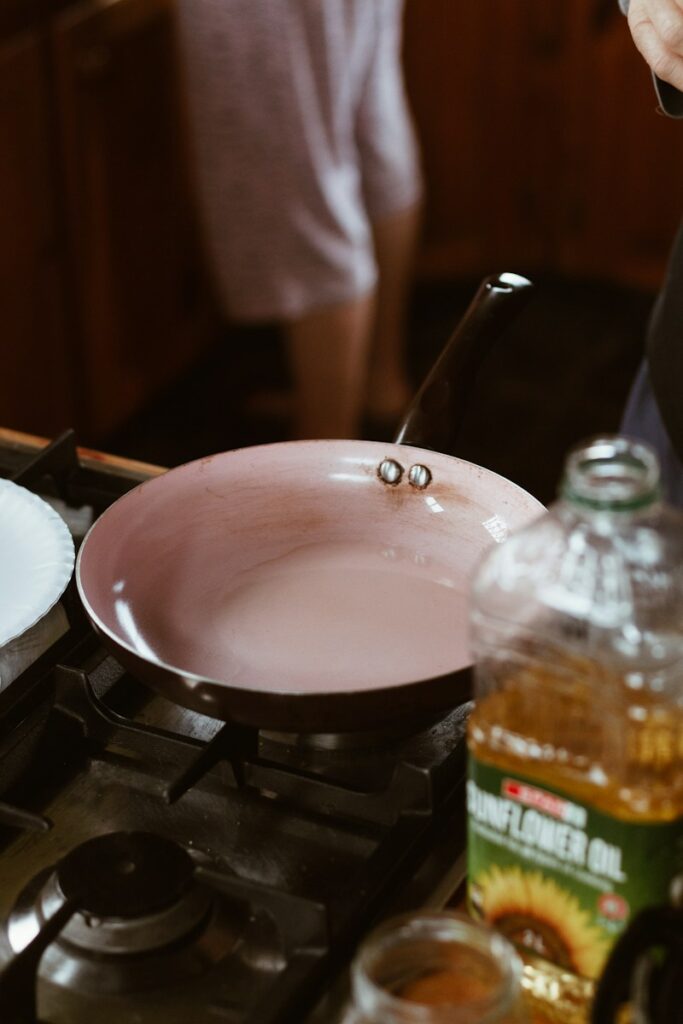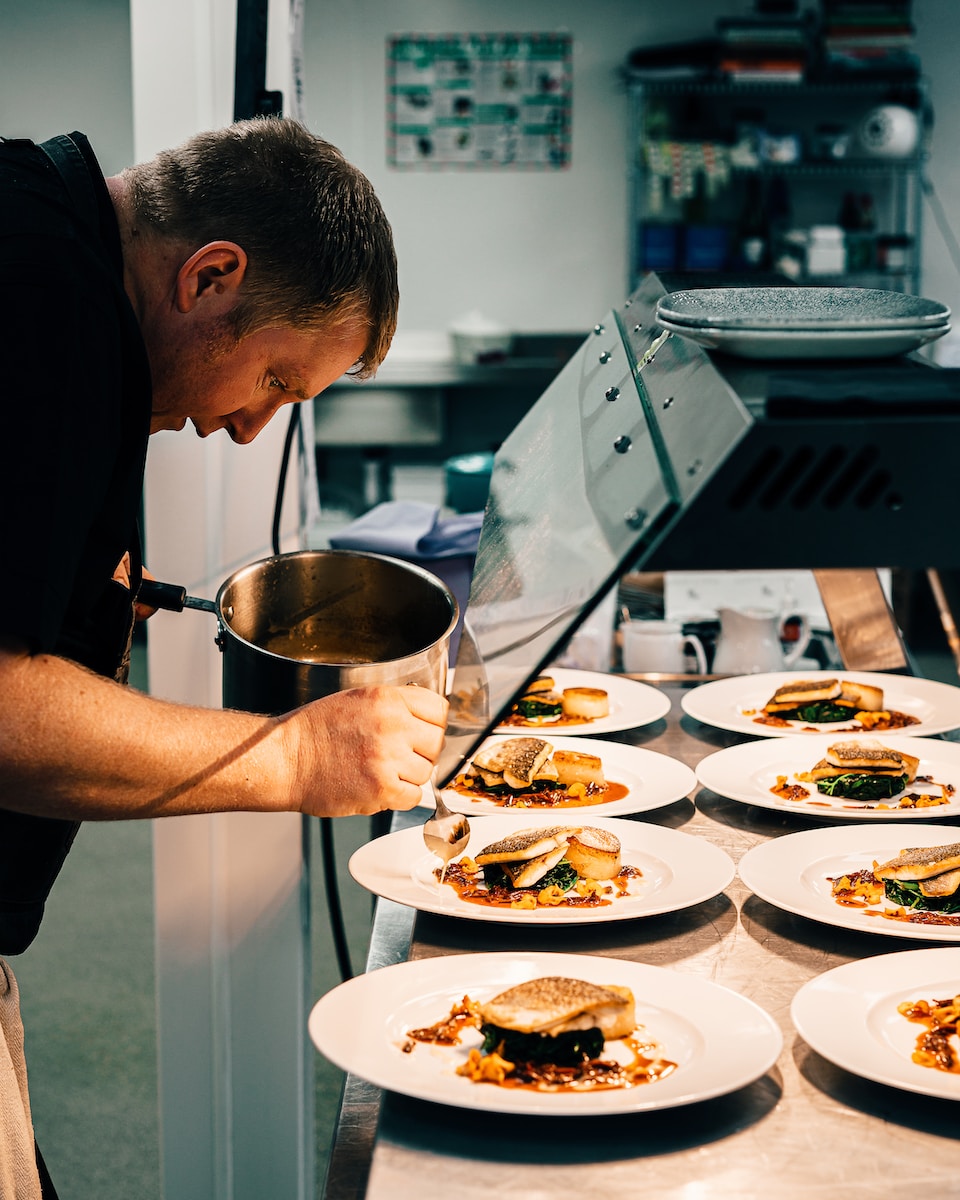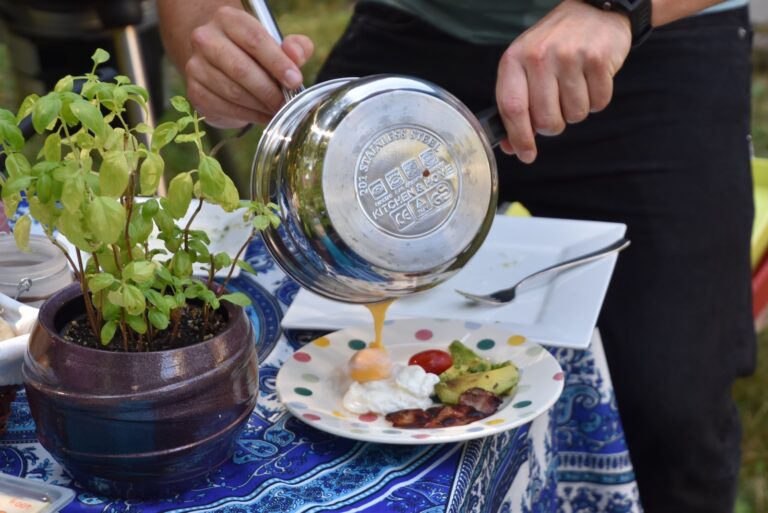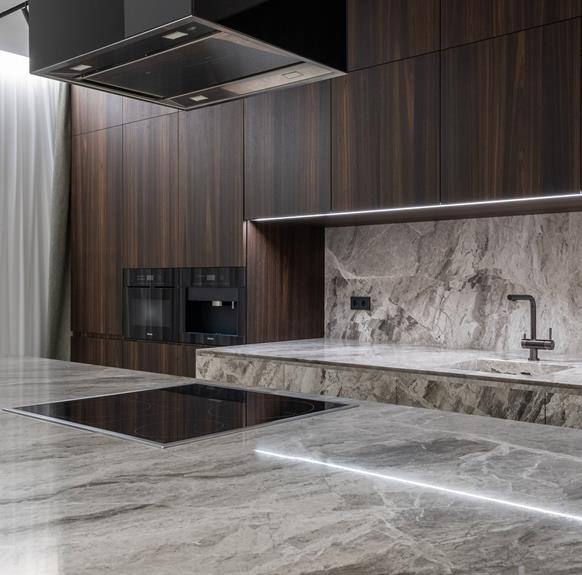Do you ever wonder why everything you cook always sticks to the pan? Don’t worry, you’re not alone.
In this article, we’ll delve into the science behind stickiness and give you practical tips to prevent this frustrating problem.
From selecting the right pan to mastering heat control and utilizing proper cooking techniques, we’ll help you understand why your food sticks and how to ensure a non-stick cooking experience every time.
Get ready to bid farewell to sticky pans!
Key Takeaways
- Moisture acts as a binding agent between food and the pan’s surface.
- A rough or uneven surface of the pan provides more opportunities for food particles to get trapped.
- Choosing the right pan with a high-quality non-stick coating and a flat, smooth cooking surface can prevent sticking.
- Preparing the pan properly, including cleaning, drying, and preheating, helps prevent food from sticking.
Understanding the Science of Stickiness
If you want to understand why everything you cook sticks to the pan, it’s important to learn about the science of stickiness.
One key aspect to consider is the role of moisture in sticky cooking. Moisture plays a significant role in creating stickiness because it acts as a binding agent between the food and the pan’s surface. When moisture is present, it creates a layer of steam that can cause the food to adhere to the pan.
Another factor that contributes to stickiness is the surface texture of the pan. A rough or uneven surface can provide more opportunities for food particles to get trapped, leading to a stickier cooking experience. On the other hand, a smooth surface reduces the chances of food sticking, allowing for effortless cooking and easy cleaning.
Understanding these two factors can help you make informed choices about your cooking tools and techniques to minimize stickiness in your kitchen.
Choosing the Right Pan for Non-Stick Cooking
To avoid food sticking to your pan, make sure you choose the right type of non-stick cookware. Here are some tips to help you make the right choice and troubleshoot common non-stick cooking problems:
- Look for pans with a high-quality non-stick coating that can withstand high heat.
- Consider the material of the pan. Aluminum pans are lightweight and heat up quickly, while stainless steel pans are durable and can distribute heat evenly.
- Opt for pans with a flat, smooth cooking surface to prevent food from getting trapped in the crevices.
- Avoid using metal utensils on your non-stick pans. Instead, use silicone, wood, or nylon utensils that won’t scratch the coating.
Preparing Your Pan for Success
Ensure your pan is clean and dry before adding any ingredients to it. This is crucial for preventing your food from sticking to the pan.
Before you start cooking, take a moment to inspect your pan. Look for any residue or food particles that may be stuck on the surface. Use a gentle scrub brush or sponge to remove any debris.
Once your pan is clean, make sure it’s completely dry. Moisture can cause sticking, so give it a quick wipe with a clean towel.
When it comes to preheating, different pans have different requirements. Cast iron pans, for example, benefit from a slow and gradual preheating process. Non-stick pans, on the other hand, should be preheated on medium-high heat.
Mastering the Art of Proper Heat Control
You can achieve perfectly cooked dishes by mastering the art of proper heat control. It’s all about understanding how temperature affects your food and adjusting accordingly. Here are some tips to help you master temperature control and troubleshoot sticky situations:
- Preheat your pan: Make sure your pan is hot before adding any food. This will create a non-stick surface and prevent sticking.
- Use the right oil: Choose an oil with a high smoke point, such as canola or vegetable oil. This will prevent the oil from breaking down and sticking to the pan.
- Control the heat: Adjust the heat as needed throughout the cooking process. Too high of heat can cause sticking, while too low of heat can result in uneven cooking.
- Add food at the right time: Wait until the pan is hot and the oil is shimmering before adding your ingredients. This will help create a barrier between the food and the pan, preventing sticking.
Exploring the Role of Oil and Fat in Preventing Stickiness
Choosing the right oil with a high smoke point, like canola or vegetable oil, prevents the breakdown of oil and sticking to the pan. However, if you’re looking for alternative non-stick cooking methods or want to prevent stickiness without using oil, there are a few options you can explore. One method is using a non-stick cooking spray, which provides a thin layer of lubrication to prevent food from sticking. Another option is using parchment paper or silicone baking mats, which create a barrier between the food and the pan. Additionally, you can try seasoning your pan with salt or using a well-seasoned cast iron skillet, as the seasoning creates a natural non-stick surface. By incorporating these alternative methods into your cooking routine, you can enjoy stick-free cooking without relying solely on oil.
| Method | Description | Pros | Cons |
|---|---|---|---|
| Non-stick cooking spray | Provides a thin layer of lubrication | Easy to use, convenient | May contain additives or chemicals |
| Parchment paper or silicone baking mats | Creates a barrier between food and pan | Easy to clean up, reusable | Can affect browning or searing |
| Seasoning with salt or a seasoned cast iron skillet | Creates a natural non-stick surface | Enhances flavor, durable | Requires regular maintenance and care |
Utilizing Cooking Techniques to Prevent Food From Sticking
To prevent your food from sticking to the pan, there are a few cooking techniques you can utilize.
First, make sure you’ve proper heat control by preheating your pan on medium-high heat before adding your ingredients.
Secondly, choose the right oil for the job – oils with high smoke points like canola or vegetable oil work best for preventing stickiness.
Lastly, consider using non-stick pans, which have a special coating that helps food slide right off without sticking.
Proper Heat Control
If the heat is too high, your food will stick to the pan. Proper heat distribution and temperature control are essential to prevent food from sticking. Here are some tips to help you achieve the perfect heat for your cooking:
- Use a quality pan with a thick bottom for better heat distribution.
- Preheat your pan before adding any ingredients to ensure even cooking.
- Adjust the heat as needed during cooking to maintain the desired temperature.
- Avoid overcrowding the pan, as it can lower the temperature and cause food to stick.
By following these guidelines, you can control the heat effectively and prevent your food from sticking to the pan.
Enjoy cooking without the frustration of sticky messes!
Choosing the Right Oil
You’ll want to consider the smoke point of the oil you use to prevent burning and maintain the flavor of your dishes.
When it comes to frying techniques, choosing the right oil is crucial. Different oils have different smoke points, which is the temperature at which they start to break down and produce smoke. Oils with high smoke points, like avocado oil or refined peanut oil, are ideal for frying as they can withstand high temperatures without burning.
On the other hand, oils with low smoke points, such as extra virgin olive oil or flaxseed oil, are better suited for low-temperature cooking or as finishing oils. Additionally, certain oils, like canola oil or coconut oil, offer health benefits due to their composition of healthy fats.
Utilizing Non-Stick Pans
Are you tired of scrubbing stubborn food residue off your pans? It’s time to consider utilizing non-stick pans with their revolutionary non-stick coating. Say goodbye to sticky situations and hello to effortless cooking!
Here are some reasons why non-stick pans are a game-changer:
- Superior non-stick coating: The advanced non-stick coating ensures that your food glides effortlessly, preventing it from sticking to the pan’s surface.
- Easy to clean: With non-stick pans, cleaning becomes a breeze. No more tedious scrubbing or soaking required!
- Versatile cooking: Non-stick pans are perfect for cooking a variety of dishes, from delicate omelets to crispy stir-fries, without worrying about them sticking or burning.
- Alternative cookware: If you’re looking for a healthier cooking option, non-stick pans require less oil or butter, making them a great alternative cookware choice.
Investing in non-stick pans will save you time and effort in the kitchen, allowing you to enjoy delicious meals without the hassle of sticky messes.
Cleaning and Maintaining Your Pans for Long-Term Non-Stick Performance
To keep your pans in optimal condition for long-lasting non-stick performance, it’s important to clean and maintain them properly. By following proper cleaning techniques, such as using a gentle dish soap and a non-abrasive sponge, you can remove any residue without damaging the non-stick surface.
Additionally, seasoning your pans regularly with a small amount of oil will help to enhance their non-stick properties and prolong their lifespan.
Proper Cleaning Techniques
If you don’t properly clean your pan after each use, food will continue to stick to it. Don’t worry though, with the right techniques, you can easily prevent food buildup and keep your pan in top-notch condition.
Here are four tips to help you clean your pan like a pro:
- Use hot water and dish soap: Start by rinsing your pan with hot water to remove any loose bits of food. Then, add some dish soap and scrub the pan gently with a sponge or soft brush.
- Soak stubborn stains: If there are stubborn stains or burnt-on food, fill the pan with warm water and a few drops of dish soap. Let it soak for a while to loosen the residue before scrubbing.
- Avoid abrasive cleaners: Harsh scrubbers or cleaners can damage the non-stick coating of your pan. Stick to gentle cleaning tools to preserve its performance.
- Dry thoroughly: After washing, make sure to dry your pan completely to prevent any moisture from causing rust or damage.

Seasoning Your Pans
To maintain the non-stick surface of your pans, it’s important to season them regularly with a thin layer of oil. Proper seasoning techniques are key to ensuring your pans stay non-stick and your food doesn’t stick to the surface. When seasoning your pans, start by cleaning them thoroughly with warm, soapy water to remove any residue. Next, dry the pans completely to prevent any moisture from interfering with the seasoning process.
Once dry, apply a small amount of oil to the surface of the pan, spreading it evenly with a paper towel or cloth. Be sure to use an oil with a high smoke point, such as vegetable or canola oil. Finally, place the pan in a preheated oven and bake at a high temperature for about an hour. This will help to create a durable, non-stick coating on the pan.
Troubleshooting common seasoning mistakes is also important. If you notice that your food is still sticking to the pan after seasoning, it could be due to a few reasons. Firstly, you may not have applied enough oil during the seasoning process. Remember to use a thin, even layer of oil to ensure proper coverage.
Another common mistake isn’t allowing the oil to heat up properly before adding your food. Make sure the oil is hot before adding ingredients, as this will create a temporary non-stick surface. Lastly, avoid using metal utensils on your pans, as they can scratch the non-stick coating and cause food to stick.
Conclusion
In conclusion, by understanding the science of stickiness, choosing the right pan, preparing it properly, controlling heat, using oil and fat strategically, and implementing cooking techniques, you can prevent your food from sticking to the pan.
Additionally, proper cleaning and maintenance of your pans will ensure long-term non-stick performance.
With these tips in mind, you’ll be able to cook without the frustration of food sticking to the pan.


